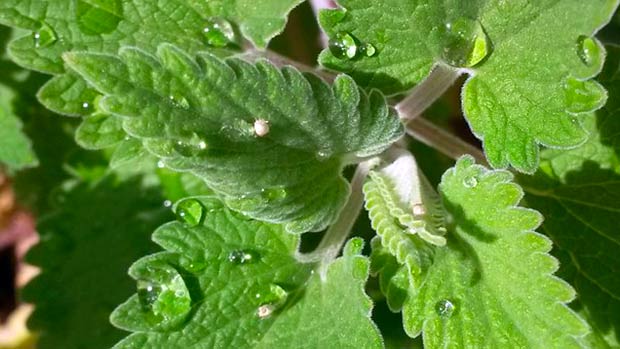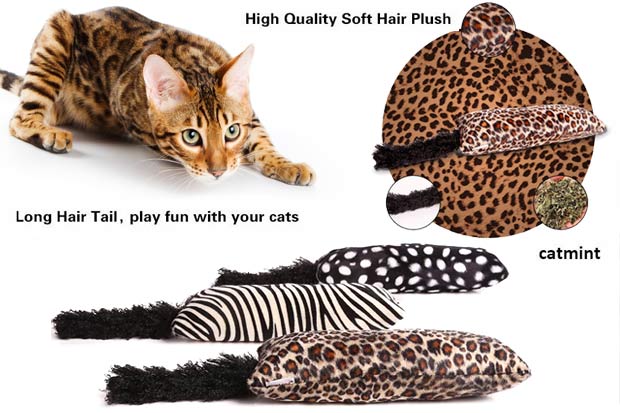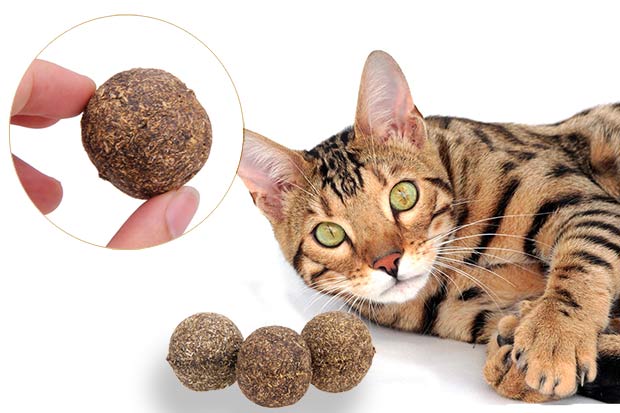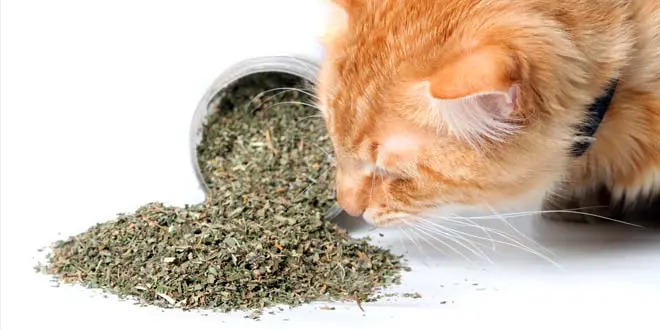[dropcap]A[/dropcap] happy cat doesn’t need much. A bowl of food, fresh water, regular vaccinations, some cuddles here and there, and regular stimulation through playtime are all a cat really needs to live a healthy life.
However, treating your cat to some catnip every once in a while is a great way to give him some additional stimulation.
But what is catnip? What is this plant’s secret to driving cats crazy?
We put together a thorough guide to understanding what is catnip and how it can benefit your cat’s life in an all natural way.
Check out this great guide!
What Is Catnip?
Catnip, also known as Nepeta Cataria, is a species from the family Lamiaceae in the genus called Nepeta. This plant is native to many parts of the world, including most of southwestern Europe, Asia, and the Middle East.

The versatility of catnip has allowed for it to be naturalized in places it isn’t native to, like North America and New Zealand.
Catnip is also known as catswort and catmint.
This perennial herb can grow nearly four feet tall and has the appearance of the common household mint herb.
Catnip’s flowers are a quite attractive cluster of white blossoms that resemble baby’s breath, making the plant an aesthetically pleasing plant to keep in the home. Butterflies are also unusually attracted to the blossoms as well.
What Is Catnip’s Effect on Cats and How Does It Work?
Everybody knows how crazy some cats go over it.
When sniffed, it can cause cats to go wide-eyed and crazy. When eaten, it almost has a depressant “high” effect that can put your cat right to sleep. Some cats (around 20-30%) don’t react to catnip at all.
When cats do react to catnip, there are some common symptoms and behaviors one may notice:
[tie_list type=”checklist”]
- Aggressive head rubs
- Rolling around on the ground or other surfaces
- Chattering
- Loud purring
- Vocalizing
- Drooling
- Dilated pupils
- Flipping around and hyperactive behavior
- Sleepiness
[/tie_list]
These symptoms can last anywhere from five to ten minutes. Afterward, cats are actually immune to catnip’s intoxicating effects for around half an hour.
The cause of this feline intoxication is nepetalactone, a volatile oil found in the catnip plant. When this chemical enters a cat’s nose, it binds to protein receptors in the brain that engage sensory neurons.
The cells create an olfactory neuron response that stimulates different parts of the brain, including the amygdala and hypothalamus.
The amygdala handles behavioral reactions. The hypothalamus, on the other hand, regulates response from the pituitary gland, which elicits a sort of sexual response.
In short, when your cat is rolling around, chirping, and purring, they are actually responding to a fake cat pheromone. Those are all behaviors you’d typically see in a female cat in heat, right?
What Is Catnip’s Benefit to Cats?
So what is catnip’s real benefits, other than getting your cat stoned on fake cat pheromones?
Additional health benefits of catnip include stimulation. If your cat needs a little pep in its step to get up and play, catnip may be able to help them get some much-needed exercise to stay healthy.
If you have a cat that is especially stressed out when kept in a carrier, a little bit of catnip can be sprinkled in their bedding to help relieve some of the stress and anxiety of traveling.
What Is Catnip’s Danger? Is It Unhealthy for My Cat?
Whether you own a Bengal cat or American Shorthair or Siamese cat, catnip can have the same effect across all breeds– or no effect at all!
Even hybrid cats can enjoy the benefits of catnip without much deviation from other domestic breeds.
Catnip and catmint are 100% safe and harmless to cats. Your furry friend may get a little too excited by the effects and cause some collateral damage by zooming around the house, but other than that, the plant is only beneficial.
If overexposed to catnip, your cat may become “addicted” to the substance and the effect of the chemical may wear off completely once it becomes habitual.
As a rule of thumb, you should give some to your cat once or twice a week, no more.
Why Does Catnip Cause Different Reactions in Different Cats?
If your cat has a strong reaction to it, it may be because of genetics. Catnip sensitivity in cats is actually a hereditary trait.
The plant also doesn’t have much of an effect on small kittens under six months of age, so if your little pal isn’t enjoying catnip, it may be because they haven’t reached sexual maturity.
How to Give Your Cat Catnip
There are a number of ways to give your cat this wonderful plant.
Loose dried herbs
You can purchase dried catnip leaves in large bottles or small vials.
To use it this way, take a pinch of the herb out of the container and rub it between your fingertips. This will activate the volatile chemical and oil that your cat will react to.
Offer the rubbed mixture to your cat. They may rub on your hand or try to eat the leaves from your hand.
You can also sprinkle the mixture on the floor, on a cat tree, or directly onto the cat, too.
While this is definitely the most fun way to use catnip, it’s also the messiest.
Catnip toys
You can buy soft toys that are filled with catnip. This is a significantly less messy alternative to loose dried herbs.

Simply remove the catnip toy from its packaging and toss it to your cat. You may notice that at various times throughout the week, your cat will stumble upon the catnip toy and get very excited.
It’s important to remember that since the catnip leaves are sewn into the toy, they will eventually dry out and lose their potency. When this happens, you’ll need to replace the toy.
Live plants
Catnip, especially when it is in bloom, is a very pretty plant. If you enjoy having indoor plants, consider planting a large fresh catnip stalk in a pot as home decor.

Just be mindful and be sure to put the pot on the floor rather than upon on a shelf– we can almost guarantee your cat will be jumping through hoops to get to it and that may include knocking it over.
See how your kitty reacts to having the live plant inside. If they enjoy lying on the plant, you might want to consider filling a layer of pebbles on top of the soil so you don’t end up with a dirty cat.
If your cat constantly tries to dislodge the plant and run away with it, then keeping the plant may not work out. This, however, is uncommon– most cats just want to chew on the plant or sleep on it.
Catnip balls
Catnip is matted into dense, hard balls that your cat can bat around. This type of catnip is great because it provides a toy to play with and chase around, giving your cat an excuse to exercise.

Cat wine
Wines for cats like the “Pinot Meow” have no alcohol or any grape juice. It’s more like a tea for your pet that includes organically grown catnip and fresh beet juice to give a “red wine” color.
Cat wines come in different flavors and include names such as The White Kittendel, The Meowgarita, Catbernet, Meow & Chandon or Meowsling. So, now, after having worked hard all day… our kitties can finally grab a glass of wine and relax their paws on the sofa.
Catnip spray
Cats hate being sprayed with water but they’ll definitely love this unique way of administering catnip.
For catnip spray, catnip essential oil is blended with water and poured into a spray bottle. If you’re annoyed of catnip toys or balls littering different corners of your home, you can use this handy spray to isolate spots where your cat can get their catnip action on.
You can even make your own spray by making a catnip tincture and adding about a dropper’s worth of the concoction into a spray bottle with water. The alcohol in the tincture will preserve it without irritating your cat’s skin– just be sure not to spray catnip directly onto the cat.
It’s important to note that catnip spray isn’t as potent as dried or fresh catnip, but it is substantially less messy.
What Are Catnip’s Human Benefits, If Any?
You’re probably already sold on purchasing this plant for the benefit of your feline friend. But did you know that it also has wonderful benefits for humans as well?
Catnip can be brewed as a type of herbal tea, infused in a tincture, used in cooking, and can be smoked as well.
In cuisine, catnip can add a smoky, earthy flavor to dishes. The plant has been used medicinally to treat stomachaches, indigestion, lack of appetite, and menstrual problems. Old Appalachian remedies often include catnip teas for ailments like the common cold or hives.
The leaves also used to be smoked to relieve respiratory problems.
While most of these uses are old holistic treatments, there is one use for catnip that has some scientific backing to it– insect repellant.
Nepetalactone, the main chemical in catnip, is a fly and mosquito repeller. It can also repel roaches and termites as well.
When essential oil is extracted from catnip, distillation is used to bring out and isolate the nepetalactone chemical.
It’s been proven that catnip is a more effective insect repellent than commercial insect repellants, too.
How was our guide to understanding what is catnip? Did we explain what it is in a way that was informative and entertaining?
Tell us what you think in the comments section below!




